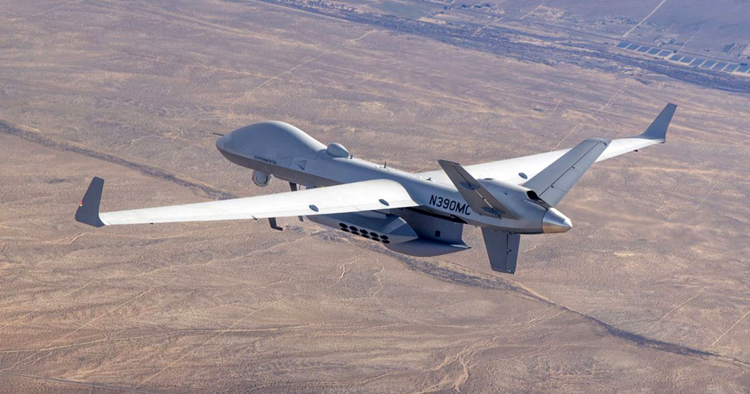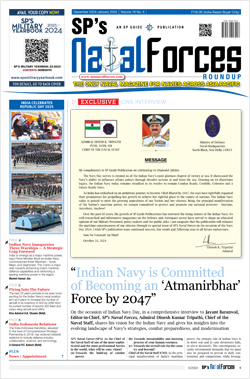INDIAN ARMED FORCES CHIEFS ON OUR RELENTLESS AND FOCUSED PUBLISHING EFFORTS

The insightful articles, inspiring narrations and analytical perspectives presented by the Editorial Team, establish an alluring connect with the reader. My compliments and best wishes to SP Guide Publications.

"Over the past 60 years, the growth of SP Guide Publications has mirrored the rising stature of Indian Navy. Its well-researched and informative magazines on Defence and Aerospace sector have served to shape an educated opinion of our military personnel, policy makers and the public alike. I wish SP's Publication team continued success, fair winds and following seas in all future endeavour!"

Since, its inception in 1964, SP Guide Publications has consistently demonstrated commitment to high-quality journalism in the aerospace and defence sectors, earning a well-deserved reputation as Asia's largest media house in this domain. I wish SP Guide Publications continued success in its pursuit of excellence.
- MoD initiates comprehensive review of Defence Acquisition Procedure 2020, pushes for defence reforms
- G7: The Swansong
- Kalinga Connect: South Asia to Polynesia
- Advanced MRSAM for India for a greater firepower
- Must Credit DRDO for Operation Sindoor, now what is next for defence R&D?
- Operation Sindoor | Day 2 DGMOs Briefing
- Operation Sindoor: Resolute yet Restrained
GA-ASI Tests Sonobuoy Dispensing System with MQ-9B SeaGuardian

On February 27, 2024, General Atomics Aeronautical Systems, Inc. (GA-ASI), in cooperation with the Naval Air Systems Command (NAVAIR), conducted a series of tests on GA-ASI's Sonobuoy Dispensing System (SDS) using the MQ-9B SeaGuardian® Unmanned Aircraft System (UAS) on the US Navy's W-291 test range in southern California.
GA-ASI's SeaGuardian flew the full test flight event configured with the SDS pod and SeaVue multi-role radar from Raytheon, an RTX business. During the test, the SDS pod dropped eight AN/SSQ-53 and two AN/SSQ-62 sonobuoys. Upon dispensing, the sonobuoys were successfully monitored by the SeaGuardian's onboard Sonobuoy Monitoring and Control System (SMCS).
"This was a very successful demonstration of our SDS capability," said GA-ASI President David R. Alexander. "The demonstration helped us prove out the SDS, which is an important component for our Anti-Submarine Warfare capability."
The SeaGuardian was flown under a NAVAIR Interim Flight Clearance. The SDS pod is fitted with an advanced pneumatic ejection system developed, designed, and manufactured by AEREA in Italy. AEREA also supplies the internal structure assembly.
MQ-9B SeaGuardian is a medium-altitude, long-endurance RPA system. Its multi-domain capabilities allow it to flex from mission to mission. SeaGuardian has been used by the US in several recent demonstrations, including Northern Edge, Integrated Battle Problem and Group Sail. The aircraft is currently being operated by the Japan Coast Guard (JCG) and the Japan Maritime Self-Defense Force (JMSDF).





